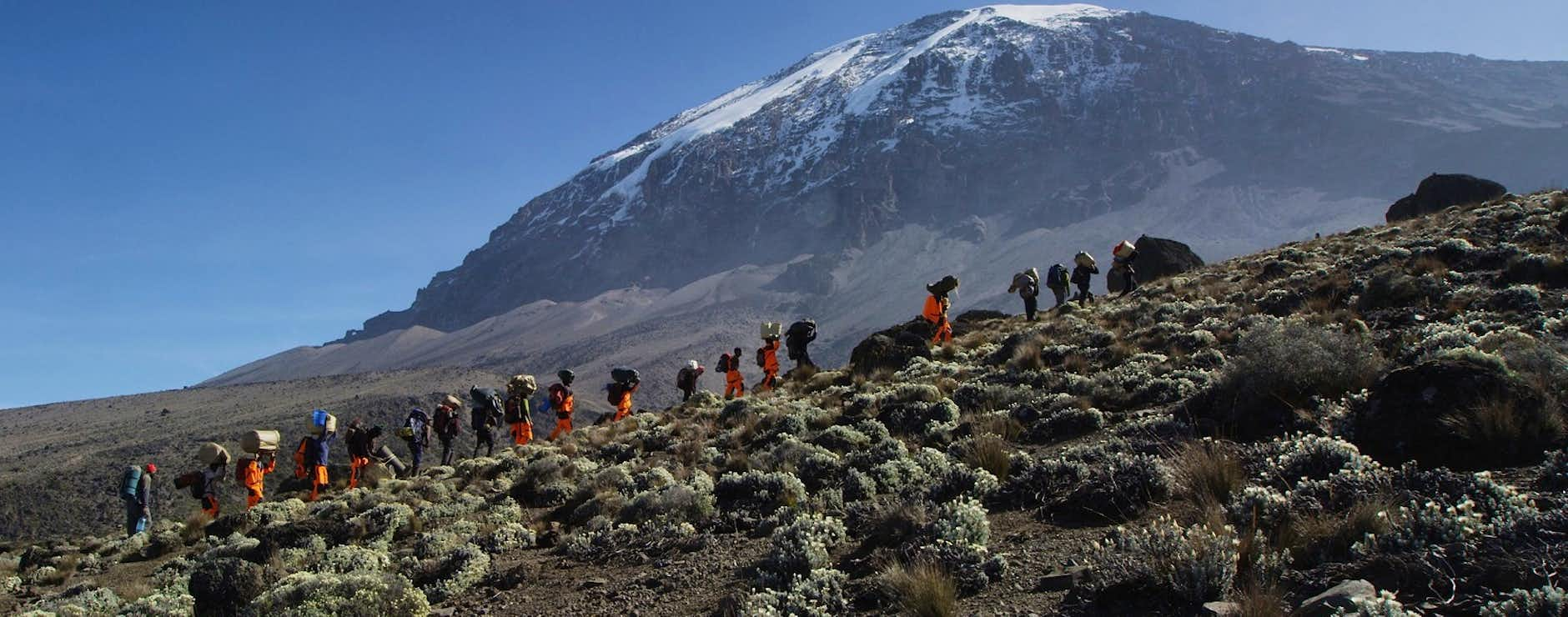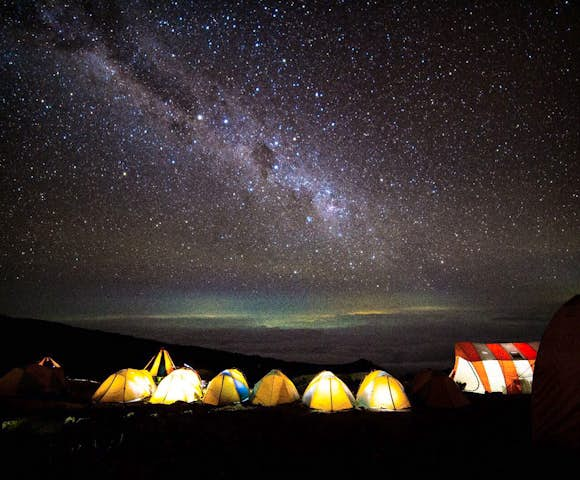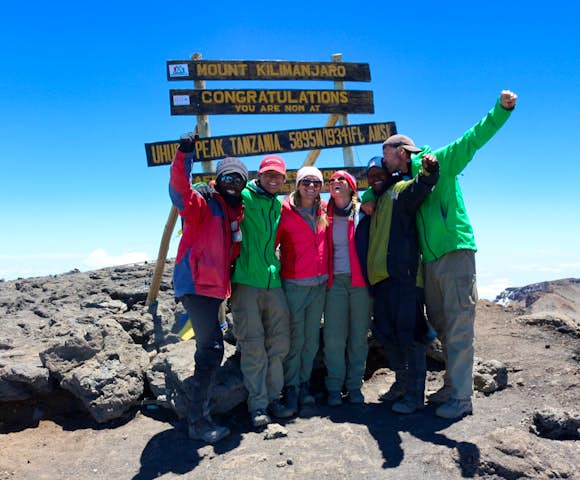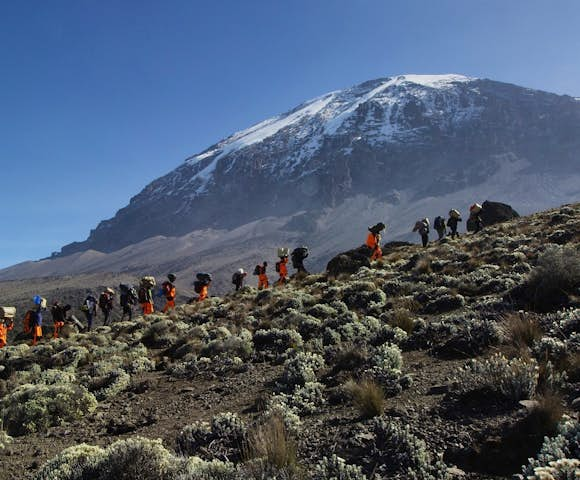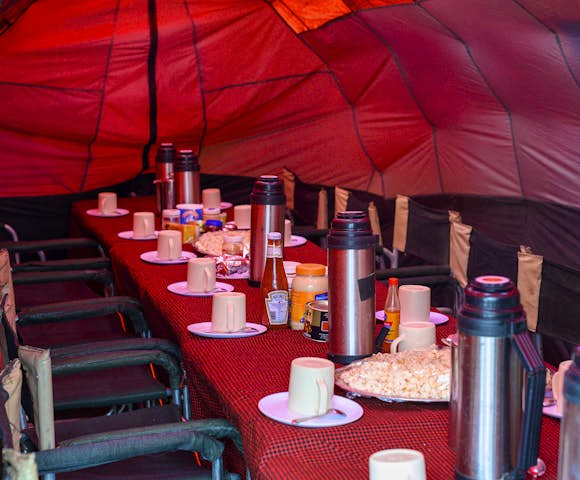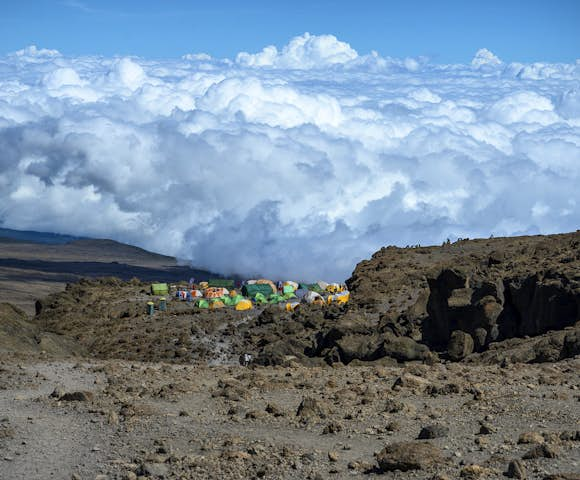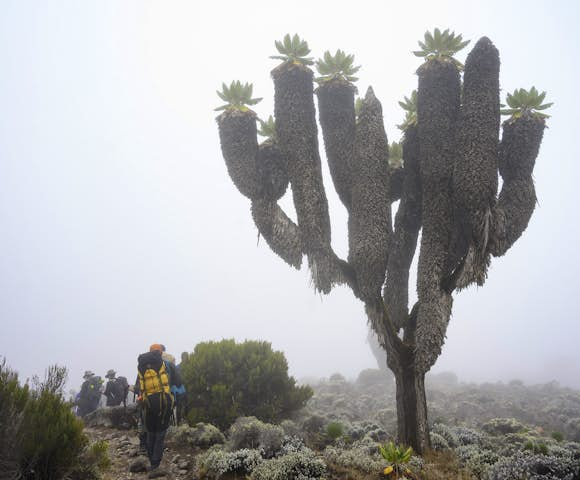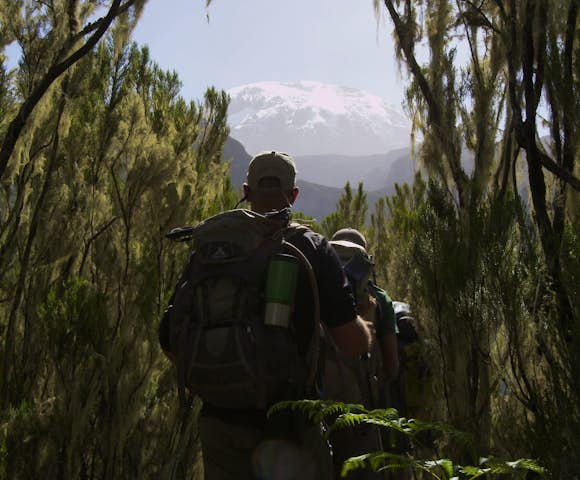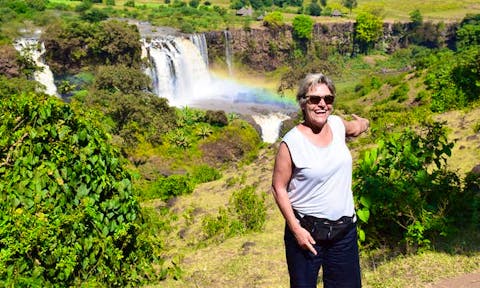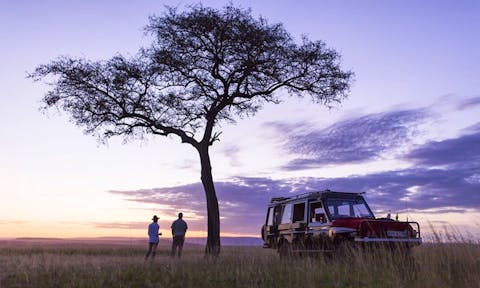Mount Kilimanjaro, at a glance
Once an active volcano, the last seismic activity recorded at Kili dates back more than 200 years, and there have been no major eruptions in over 100,000 years.
The most famous pictures of Kili are taken from the Amboseli National Park in Kenya, although the majority of summit hikes begin in Tanzania.
The summit climb is not technical, Kili has a slow incline which makes it accessible even for less experienced hikers.
The summit hike typically takes 6-8 days. If you are more limited on time, there are shorter hikes that don't take you to the summit.
The origin of its name is unclear - many believe it is a mixture of the word kilima (‘mountain’ in Tanzania’s national language Swahili) and the word njoro (which in KiChagga, the local language, loosely translates to 'whiteness', referring to its snowy peaks).
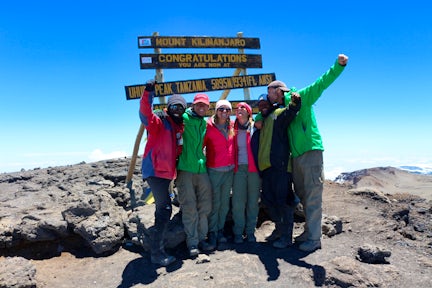
Reaching the summit, Kilimanjaro
Kilimanjaro Trekking Routes
Several routes lead to the top, all with different accommodation options, success rates, popularity and length. Routes typically take between 5 and 9 days, although it is recommended to go for at least 6 to allow for proper acclimatization.
-
Marangu Route
At 6 days this is one of the shorter routes. It used to be the most popular trek and has been named the Coca-Cola Route due to its relative low cost and popularity.
Here, you will sleep in huts, rather than tents.
The route is beautiful, but often considered to be too crowded. Success rates are as low as 50% as you do not have enough time to acclimatise.
-
Machame Route
This 7-day tour has now overtaken the Marangu Route in popularity, but is still known by its older classification of being a more difficult and tougher route, giving it its nickname The Whiskey Route.
You will stay in tents along this route.
Machame has also gained a reputation for being quite crowded but due to the longer hike length, which affords more time for acclimatization, it boasts a much higher success rate (around 85%).
-
Lemosho Route
This 8-day route approaches the peak from the west. It is often considered the most scenic route, and is less crowded than the others.
You will stay in tents along this route.
The eight days allow for a particularly high success rate, making it one of the best routes if time (and money) permits.
-
Rongai Route
The 6-7 days route starts from the north, taking you through breathtaking scenery. You will be camping on this route.
The route allows for some flexibility in acclimatization days, so if you are worried about altitude sickness, it is definitely worth it to book an extra day.
The route has around an 80% success rate, going down to 65% if you decide to do 6 days.

Brilliant says
As a general rule, you get what you pay for on the mountain. If you're serious about summiting Kili, it's worth spending more on the better routes, with the better operators.
When is the best time to climb Kilimanjaro?
The fewer clouds, the better your vision from the summit will be. Seeing the mountain scale up behind Moshi is an impressive site when there is little cloud coverage. We recommend waking up early to get the best views.
The rainy season in Tanzania is twice a year, from the end of March to the end of May, and again from November to mid-December. The wet ground and clouds make for difficult trekking and less vision at the summit.
The best conditions are in January and February, as well as August and September, although any time outside the rainy season will work well.
March and October offer less crowded hikes as people fear the rains could come early. The period right after a rainy season can also hinder vision as clouds can often linger for much longer. Sometimes you are just out of luck and the weather will be too bad to even attempt to summit.
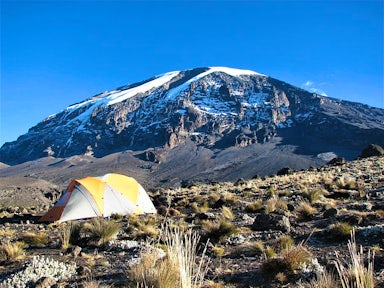
A camping experience you'll never forget
Accommodation options at Mount Kilimanjaro
While on the mountain, you will either stay in tents or huts. Huts are exclusive to the Marangu route, so this might be a decisive factor in your planning.
Your trekking team will be responsible for organising your gear and equipment. The tent quality will much depend on their services and how much money you are willing to pay.
Before starting your trek, you will normally spend a few days in Moshi (or Arusha) to start acclimatizing and sleep off any jet lag.
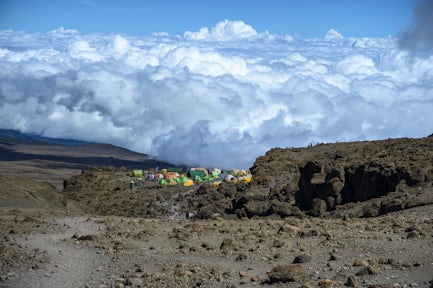
High above the clouds, Mount Kilimanjaro
How to get to Mount Kilimanjaro
The town of Moshi is traditionally the starting point for climbing Kilimanjaro. It is also possible to start from Arusha, known as the safari capital of Tanzania. Arusha is about 2 hours away from Moshi.
If your trip is in combination with a safari to the north, staying in Arusha can be a good option. Both towns are only a short distance from Kilimanjaro Airport (JRO). You can easily reach Kilimanjaro Airport from Europe with a stopover in Amsterdam (KLM), Addis Ababa (Ethiopian Airlines) or Doha (Qatar Airways).
From the airport your arranged driver will pick you up and transfer you to your hotel. Based on traffic, which can get hectic in Tanzania, this will take around 45 minutes. Arusha can experience quite the rush hour in the evenings, but this is all part of the pole pole (‘slowly slowly’) lifestyle in Tanzania.
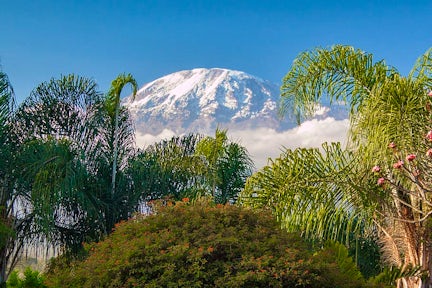
Perspectives: a snowy peak among the lush greens below
Kilimanjaro FAQs
-
Can I climb Kilimanjaro as a beginner? How do I prepare for climbing Kilimanjaro?
You will need decent fitness to tackle Kili. The toughest part is the acclimatization.
Those who fail to summit Kili do so from altitude sickness, or if they aren't physically fit enough.
A normal day includes 4-5 hours of walking (excluding the last two days which are more physically intense), while the rest of the day is spent acclimatizing at base camps.
Acclimatization can affect people differently, sometimes causing nausea or loss of appetite. Experience hiking at high altitude is recommended before taking on Kili.
-
Is Kilimanjaro dangerous to climb?
If you book with a good quality operator, and don't cut corners to reduce costs, then it is safe.
Most people fail because they do not take the trek seriously enough and don’t give themselves enough time to acclimatize.
The park forces end up rescuing around 1,000 people each year.
-
What about toilets?
There are long drop toilets at camps, but these are notoriously dirty. Your tour operator will sometimes bring their own toilets, but during day time you will just go behind a bush or a rock.
-
Can I shower on Kilimanjaro?
No. There are no showers at all, but your tour operator will give you a bowl with water to freshen up at night. The shower back at the hotel will feel all the better for it!
-
Will I need extra oxygen?
Not if you leave enough time to acclimatize. The operators we work with will bring oxygen in case of emergencies.
-
How much will it cost?
A tour can cost between $1,000 to $4,000.
Generally, we would never pay less than $2,000.
Climbing Kilimanjaro is expensive due to the high rates that the national park charges in conservation, rescue and crater fees (over $100 per person per night), combined with all the equipment, personnel, and services required to safely make it to the summit.
It is unwise to cut costs here as it is the staff - the guides, porters and cooks - that tend to feel budget cutting first, creating unfair and unsafe working environments.
Ready to plan your African adventure?
Listen
We'll spend some time listening to your aspirations, then discuss the kind of experience that might suit you.
Match
Next we'll discuss the options, shortlist the best trips for you and present you our impartial recommendations.
Reserve
We'll place a 24 hour hold on your preferred option - without obligation - whilst we talk through the details.
Whatever your budget, group size, length of stay, preferred activity or appetite for adventure, we can help.

